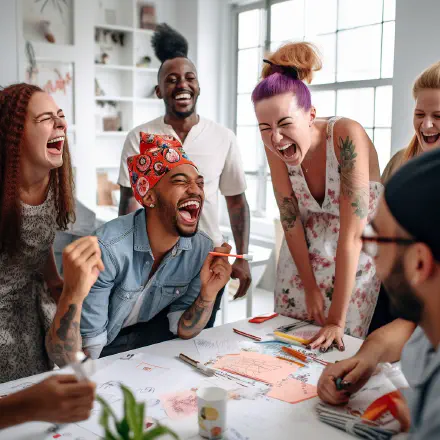
Introduction
According to Merriam-Webster, bias is “a personal and sometimes unreasoned judgment” that can interfere with our ability to make fair and objective decisions. We all have biases, whether we’re aware of them or not. Bias can take many forms, from preferring people who look like us to assuming a certain group of people is more likely to commit a crime. Left unchecked, bias can lead to discrimination, prejudice, and unjust practices.
It’s important to understand and combat bias because it affects everyone. Our biases can impact our personal and professional relationships, limit our opportunities, and perpetuate harmful stereotypes. On a larger scale, bias can contribute to systemic inequalities and injustices.
By understanding the psychology of bias, we can learn how to recognize and overcome our own biases and work towards creating a more equitable society. In the following sections, we’ll explore the different types and causes of bias, the effects it can have on individuals and society, and strategies for combatting bias in ourselves and in our communities.
Types of Bias
There are several types of bias that can influence our perceptions and decision-making. In this section, we’ll discuss some of the most common types of bias and how they manifest:
Confirmation Bias
Confirmation bias refers to our tendency to seek out and interpret information in a way that confirms our existing beliefs or hypotheses. For example, if we believe that people from a particular country are unreliable, we may selectively look for evidence that supports this belief and ignore evidence to the contrary.
Anchoring Bias
Anchoring bias occurs when we rely too heavily on the first piece of information we receive when making decisions. For example, if we’re negotiating a salary and the employer suggests an initial offer that’s lower than we were expecting, we may adjust our expectations downward and accept less than we would have otherwise.
Halo Effect
The halo effect refers to our tendency to judge people or things based on one favorable characteristic or trait. For example, if we meet someone who is physically attractive, we may assume that they’re also intelligent or kind, even without evidence to support this belief.
Implicit Bias
Implicit biases are unconscious biases that influence our perceptions and actions without us even realizing it. For example, we may unconsciously associate certain groups of people with certain traits or behaviors, even if we don’t consciously believe in stereotypes.
Self-Serving Bias
Self-serving bias refers to our tendency to attribute our successes to personal factors (e.g. our own hard work, talent, or intelligence) while attributing our failures to external factors (e.g. bad luck or other people’s mistakes). This bias is often seen in athletes who take credit for their wins but blame their losses on their teammates or referees.
Understanding these different types of biases is an important first step in combatting them and making more informed and equitable decisions.
Causes of Bias
Understanding the causes of bias is an important step in combatting it. Some of the key drivers of bias include:
Socialization
From an early age, we are exposed to messages and stereotypes that shape our worldview. For example, media representations of different groups can perpetuate harmful stereotypes and reinforce biases. Society’s expectations around gender roles, race, and other identity markers also influence the way we perceive ourselves and others.
Stereotyping
Stereotyping is a cognitive shortcut that can lead to bias. When we encounter a new situation or person, our brains try to categorize it based on our past experiences. However, these categories can be limiting and inaccurate, leading us to make assumptions about people based on their group membership rather than their individual characteristics.
Emotional experiences
Our emotions can also contribute to bias. For example, if we have had a negative experience with a member of a particular group, we may be more likely to generalize that experience to other members of that group. Emotions can also influence the way we interpret information and make decisions, leading to biased outcomes.
Cognitive shortcuts
We are constantly bombarded with information, and our brains use various shortcuts to help us process it all. However, these shortcuts can also lead to bias. For example, anchoring bias occurs when we rely too heavily on the first piece of information we receive when making a decision, while confirmation bias occurs when we seek out information that confirms our existing beliefs.
Recognizing the causes of bias can help us be more self-aware and intentional in our actions and decision-making. By examining our own biases and where they come from, we can work to overcome them and create a more just and equitable society.
Effects of Bias
Bias has significant effects on individuals and society as a whole. Some of the major effects of bias are outlined below:
Decision-making
Bias can influence decision-making, leading individuals to make decisions that are not based on objective evidence or facts. For example, confirmation bias can cause individuals to seek out information that confirms their existing beliefs and ignore information that contradicts them. Anchoring bias can cause individuals to rely too heavily on the first piece of information they receive when making decisions.
Relationships
Bias can impact personal and social relationships by causing individuals to make assumptions or judgments about others based on their appearance, culture, or background. This can lead to misunderstandings and conflicts between individuals or groups.
Systemic Inequalities
Bias can contribute to systemic inequalities and discrimination in society, including unequal access to education, healthcare, and job opportunities. Certain groups may face discrimination due to their race, ethnicity, gender, sexual orientation, or other characteristics. This can create a cycle of disadvantage, where individuals from marginalized groups are denied opportunities and resources that would allow them to overcome systemic barriers.
Mental Health
Bias can also have negative impacts on individuals’ mental health. For example, experiencing discrimination or bias can lead to feelings of anxiety, stress, and depression. Additionally, internalized bias or self-stereotyping can lead to negative self-esteem and self-doubt.
Solution-Focused Thinking
Recognizing the effects of bias is an important step in combatting it. Understanding how bias can impact our decision-making, relationships, and overall society allows us to take proactive steps to counteract these effects. By challenging our own biases and working to change broader societal attitudes and structures, we can create a more equitable and just world.
Combatting Bias
While it is important to understand the different types and causes of bias, it is equally important to learn how to combat it on an individual and societal level. Here are some strategies to overcome biases:
Overcoming personal biases
Self-awareness
The first step to combating bias is to recognize and acknowledge your own biases. Take time to reflect on your own experiences and how they may have shaped your views. Seeking feedback from others can also help you learn about any blind spots you may have.
Exposure to diversity
Being exposed to diverse perspectives can help challenge and broaden your existing beliefs. Engage with people from different cultures, attend events that celebrate diversity, and seek out different sources of information.
Challenging stereotypes
It is important to challenge any existing stereotypes you may hold about certain groups. Take active steps to learn about different cultures, religions, and backgrounds, and avoid making assumptions about people based on their identity.
Reflective thinking
Before making a decision or forming an opinion, take time to reflect on your thought process. Consider why you are thinking a certain way and whether any biases may be influencing your thoughts.
Combatting bias on a larger scale
Education and training
Education and training can help promote awareness and understanding of bias. Individuals can participate in workshops and trainings to learn about the impacts of bias and how to address it.
Policy changes
Organizations can implement policies and guidelines that promote diversity and inclusion. These policies can include hiring practices that prioritize diversity, promoting inclusive language and behaviors in the workplace, and providing resources and support for underrepresented groups.
Diversity and inclusion initiatives
Organizations can also create initiatives that celebrate and prioritize diversity and inclusion. These initiatives can include mentorship programs, employee resource groups, and diversity and inclusion task forces.
By taking these steps, we can combat bias in our own thinking and work towards creating a more equitable society. It is important to remember that overcoming bias is an ongoing process and requires constant effort and reflection.
Conclusion
In conclusion, bias is a universal human experience that influences all aspects of our lives, including our personal relationships, our decision-making processes, and our overall perception of the world around us. While it can be challenging to recognize and combat our own biases, it’s essential that we do so if we want to create a more equitable and just society.
Throughout this article, we’ve explored the different types of bias, their causes, and their effects on individuals and society. We’ve also discussed practical strategies for overcoming our own biases, such as self-awareness, exposure to diversity, and reflective thinking. Moreover, we’ve talked about larger scale strategies such as education and training, policy changes, and diversity and inclusion initiatives.
But ultimately, combating bias requires a collective effort that goes beyond individual actions. We need to work together to build a more inclusive and empathetic society that values diversity and promotes equity. It starts with each one of us recognizing our own biases and actively working towards overcoming them. By doing so, we can contribute to a more just and harmonious world for all. Let’s take action today and make a difference!


